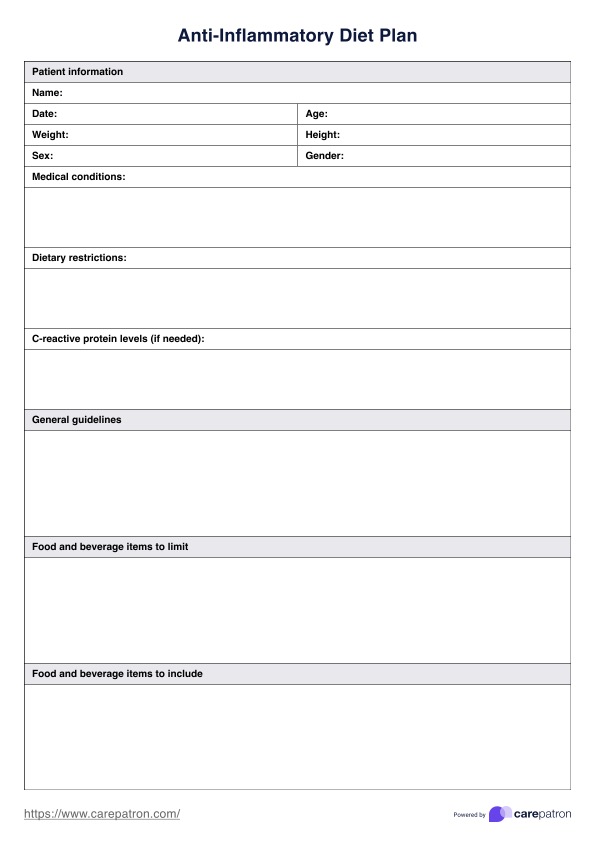While the term “diet” may sound inherently negative, it's important to understand that anti-inflammatory diets are not like traditional, restrictive diets. An Anti-Inflammatory Diet Plan focuses on achieving a well-balanced lifestyle, encouraging individuals to eat whole foods most of the time while remaining flexible to still allow individuals to satisfy their tastes and food preferences. Adopting this lifestyle means individuals can prioritize their health while still indulging in foods that may be less nutritionally dense, such as alcohol or sweets on occasion. This makes this diet flexible for anyone, but it is particularly recommended for those experiencing chronic inflammation or at risk of developing chronic illness.

Anti Inflammatory Diet Plan
Create an Anti-Inflammatory Diet Plan with your client that's designed to reduce inflammatory markers using our free template.
Anti Inflammatory Diet Plan Template
Commonly asked questions
Anti-inflammatory diet Plans are used when individuals seek to make long-term lifestyle changes to improve their health. This can be for a variety of different reasons, including reducing inflammation, weight loss, reducing blood pressure, and mitigating risks for chronic illnesses.
Anti-Inflammatory Diet Plans provide a comprehensive, user-friendly guide to inflammatory and anti-inflammatory foods. These can help individuals and healthcare practitioners identify foods that may be causing inflammation, as well as provide ideas of where anti-inflammatory foods can be introduced into the regular diet. From here, the plan can be used to devise grocery lists, weekly meal plans, and categorize which foods could be saved for special occasions.
Rather than being a short-term, “21-day anti-inflammatory diet plan,” an effective Anti Inflammatory Diet Plan is a long-term lifestyle change. Individuals using this plan should aim to be consistent in following recommended guidelines to experience the many benefits. The flexibility of this lifestyle uses an 80/20 rule, where individuals aim to maintain an anti-inflammatory diet 80% of the time, but can still enjoy occasional foods and beverages, such as cakes and fried foods 20% of the time.
EHR and practice management software
Get started for free
*No credit card required
Free
$0/usd
Unlimited clients
Telehealth
1GB of storage
Client portal text
Automated billing and online payments











